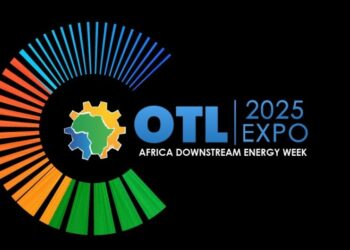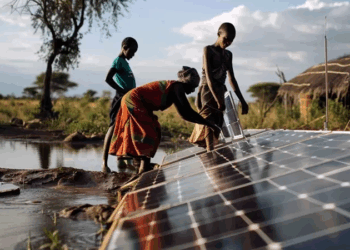The Organization of Petroleum Exporting Countries, OPEC+ during its November meeting handed Nigeria a 2024 oil output target lower than it argued for.
The move follows a meeting in June where OPEC+ agreed a complex deal that revised production targets for several members.
The OPEC had tasked three consultancies – IHS, Rystad Energy and Wood Mackenzie with verifying production figures for Nigeria, Angola and Congo.
Based on that it has given Nigeria a 2024 target of 1.5 million barrels per day (bpd), Angola one of 1.11 million bpd and Congo a target of 277,000 bpd.
In June it had been agreed, pending the assessments by the consultancies, that Angola could produce 1.28 million bpd and Nigeria 1.38 million bpd and possibly as much as 1.58 million bpd.
Both have failed to meet previous quotas hurt by underinvestment and security issues.
Congo’s target for 2024 is roughly in line with what was agreed in June.
Disagreements over African output quotas was cited by sources as a reason OPEC+ postponed an in-person OPEC+ meeting sceheduled for November 26 until Thursday November 30.
Angola on Thursday was unhappy with its 2024 output target and does not plan to stick to it, Bloomberg reported.
Nigerian output has been in decline for years, but has picked up in recent months helped by more production offshore, which is less prone to security problems, two analysts told Reuters.
Still, Nigeria’s own targets of hitting 2 million barrels a day in crude and condensate output next year are more optimistic than realistic they said.
According to Rystad’s calculations, under its base case scenario Nigeria can expect to see crude output rise to 1.5 million bpd next year assuming no further disruptions.
FGE analyst James Forbes said that the country’s maximum crude output this year has been about 1.51 million bpd, so this is likely what they can achieve if all streams were to operate at maximum capacity.
“However, most of Nigeria’s fields are mature and declining so it is unlikely this would happen,” he said.
Nigeria’s Dashed Production Optimism
Before the meeting Nigeria has put some machinery in place ostensibly to ramp up its production targets perhaps hoping and believing the producer group would consider her demand.
Though it was obvious the country intends to ramp up its crude and condensate output to about 2 million barrels a day, bpd by the end of the first quarter of 2024, with the aim is to reach 2.5 million bpd in the next couple of years.
Nigeria was producing 1.7 million barrels per day of crude and condensates as of November 17 and expects to hit 1.8 million bpd by the end of the year.
Chief corporate communications officer of the Nigerian National Petroleum Company Limited, NNPCL, Olufemi Soneye, shared these figures in Abuja.
An ominous sign of this rejection appeared in the horizon, when in a surprise move, the organisation and its allies, delayed a scheduled ministerial meeting until November 30.
The meeting was expected announce either to extend or deepen output cuts in 2024, with oil prices falling considerably in recent weeks over demand concerns and burgeoning supply.
According to OPEC+ sources, OPEC members Angola, Congo and Nigeria are struggling to agree on output levels and hence possible reductions ahead of the meeting originally set for November 26.
In a June OPEC+ meeting, the trio of African producers were given lower targets after years of failing to meet the previous ones.
Nigeria saw its 2024 target reduced to 1.38 million bpd from 1.74 million previously, but it will be allowed a higher production target of 1.58 million bpd if three independent consultancies can confirm its capacity to produce at this level.
Unlikely Target
From the standpoint of data that can still be contested it seemed much unlikely that Nigeria would achieve its own oil production target in 2024 after years of declining output.
Nigeria is seeking to have a higher 2024 target verified by OPEC+ at a time when the group is considering cutting output further rather than increasing it.
In June, OPEC+ cut Nigeria’s output target for 2024 to 1.38 million barrels per day from 1.74 million bpd for 2023, reflecting the fact that for years Nigeria had failed to meet its targets.
The group, however, agreed to give Nigeria a 2024 quota of 1.58 million bpd, subject to independent verification that it could really pump that much.
Nigeria is looking to boost output by resurrecting dormant oilfields and pushing more production onshore, and is introducing fresh measures to address security threats.
The use of independent assessments comes after past disagreements about countries’ oil output and production capacity, metrics that feature in negotiations to set individual targets.
Figures from two out of the three consultancies indicate that Nigeria’s 2024 crude output is not likely to reach 1.58 million bpd, potentially challenging the country’s push for the higher quota and complicating a wider OPEC+ agreement.
Nigeria currently produces 1.3 million bpd of crude, according to Rystad, which it expects to rise to 1.5 million bpd next year under its base case scenario.
“This is assuming no further major disruptions,” Patricio Valdivieso of Rystad told Reuters.
A source at another of the three consultancies, which declined to be identified, said that although they had raised estimates for Nigerian output, they don’t expect it to hit 1.58 million bpd next year.
OPEC+ has not indicated how the lack of verification will affect quota talks.
Nigeria’s governor to OPEC Gabriel Tanimu Aduda told Reuters last week he was comfortable with the findings of the three consultancies.
Underinvestment and unrest in the oil-producing Delta region has squeezed Nigeria’s oil output from around 2 million bpd five years ago, depriving the government of much-needed revenue.
The OPEC figures put the country’s October crude output close to its 1.38 million bpd 2024 quota.
IEA Sees Supply Surplus In 2024 Despite OPEC’s Cut
Despite oil politics which OPEC is using to stabilize the market, the Head of Oil Industry and Markets Division at the International Energy Agency (IEA), Toril Bosoni, has said that current oil market deficit will turn into a slight surplus next year even if OPEC+ leaders Saudi Arabia and Russia extend their production and export cuts into 2024.
Global oil stocks are currently falling “at a fast rate,” Bosoni said.
Penultimate week, the IEA raised its global oil demand forecasts for 2023 and 2024, as consumption is exceeding expectations. But the agency warned that supply growth was also topping forecasts.
“For now, with demand still exceeding available supplies heading into the Northern Hemisphere winter, market balances will remain vulnerable to heightened economic and geopolitical risks – and further volatility ahead,” the IEA said.
Speculation is growing that OPEC’s top producer, Saudi Arabia, will extend its voluntary cut of 1 million barrels per day (bpd) into 2024, considering the latest slide in oil prices to $80 and the typically weak period for oil demand in the first quarter of every year. Market talk is also intensifying that OPEC+ could announce a deeper cut at the group’s meeting in the weekend November 25-26.
The recent weakness in oil prices “has increased noise over what OPEC+ will decide to do at its meeting on 26 November. We continue to expect that Saudi Arabia and Russia will roll over their additional voluntary cuts into early 2024,” ING strategists Warren Patterson and Ewa Manthey wrote on Monday.
“However, what is less clear is whether the broader OPEC+ group will make further cuts,” they added.
A deeper group cut combined with the Saudis and Russians rolling over their voluntary reduction would wipe out the currently expected market surplus in the first quarter of 2024, the strategists noted.





